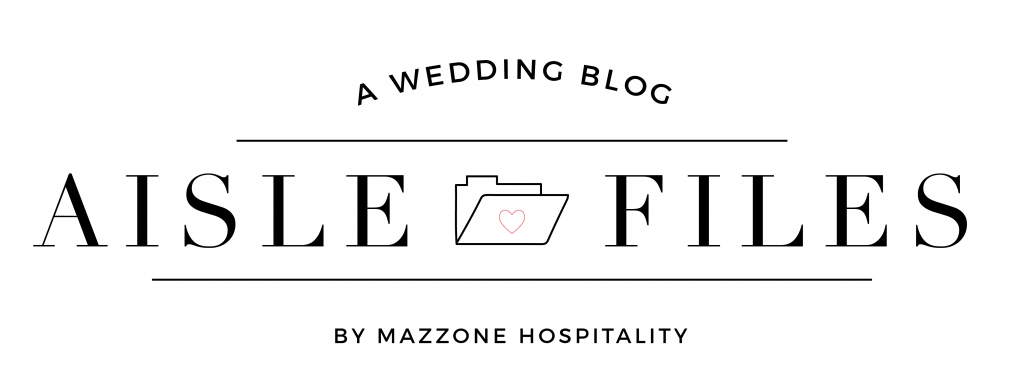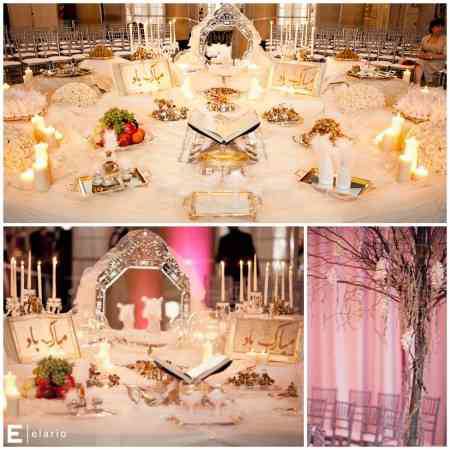Ethnic Wedding Series: The Persian Sofreh Aghd
Continuing with our Ethnic Wedding Series, this topic is one that we have started to see more and more of. It is Persian Weddings and the Sofreh Aghd. Aghd has many different meanings in Iran, but it mostly commonly means the legal ceremony of an Iranian Wedding. The Sofreh Ahgd is usually present during a Persian Ceremony, and is taken very seriously because it contains what is believed and hoped to be in the couple’s life and marriage. Typically set on the floor facing east so that when the couple face the sofreh they face the light, sofrehs are usually covered in traditional white cloths.
We have had a few Sofrehs at the Hall of Springs in the past few years. Any of you blog readers who read Joe Elario‘s blog will definitely know and recognize Mona and Andrew and their Sofreh. If not, you can remember them here!
There are certain items that are placed on a Sofreh. They are:
A Mirror and Two Candelabras on either side of the mirror. They are the symbols of light and fire. The candelabras represent the bride and groom and brightness in their future and the mirror reflects the brides image after she removes her veil making her the first thing her groom sees.
A Tray of seven multi-colored herbs and spices or “Sini-ye Aatel-O-Baatel”. thees serve the purpose of guarding the couple and their lives together against the evil eye, witchcraft, and to drive away evil spirits. The seven elements in seven colors are
1. Poppy Seeds “Khash-Khash”
2. Wild Rice :Berenj”
3. Angelica “Sabzi Khoshk”
4. Salt “Namak”
5. Nigella Seeds “Raziyaneh”
6. Black Tea “Chaay”
7. Frankincense “Kondor”
A specially baked bread and decorated flatbread (“Noon-e Sangak”) with the blessing “Mobaarak-Baad” written in calligraphy on it using cinnamon, Nigella Seeds, or Glitters. This is present along with a separate platter of flat bread, cheese, and herbs to be shared with the guests after the ceremony. This is done in the hopes of bringing the new couple happiness and prosperity.
A basket of decorated eggs and a basket of decorated almonds, walnuts, and hazelnuts in the shell to symbolize fertility.
A basket of pomegranates and apples to symbolize heavenly fruit and the divine creation of mankind.
A cup of rose water extracted from Persian Roses “Gol-a Mohammadi” to perfume the air.
A bowl made out of crystallized sugar to sweeten life for the newly weds.
A bowl of gold coins representing wealth and prosperity.
A scarf or shawl made out of silk or any other fine fabric to be held over the bride and groom’s heads throughout the ceremony by various happily married female relatives.
A brazier “Manghal” holding burning coals sprinkled with wild rue “Espand” a popular incense. Wild rue is believed to keep the evil eye away and bring on health.
Two sugar cones “Kalleh Ghand” made out of hardened sugar to be used during the ceremony. They are ground together above the bride and groom’s heads to shower them in sugar thus symbolizing sweetness and happiness.
A cup of honey, to sweeten their life together. After the ceremony the bride and groom are to each dip their pinky finger in the cup and feed the honey to each other.
A needle and seven strands of colored thread to figuratively sew up the mother-in-laws lips to keep her from saying unpleasant words to the bride.
A copy of the couple’s holy book.
Not all of these things are always on the Sofreh but they are important to the culture and have significant meaning to the ceremony. Bride and Grooms can pick and choose what means most to them to put on their Sofreh. Another Persian wedding at the Hall of Springs recently last February. Remember Anjella and Sarmad? This is what their Sofreh looked like.
And, we have another Sofreh coming up in May of this year at The Hall of Springs, stay tuned for their Real Wedding Spotlight to see how it turned out!


